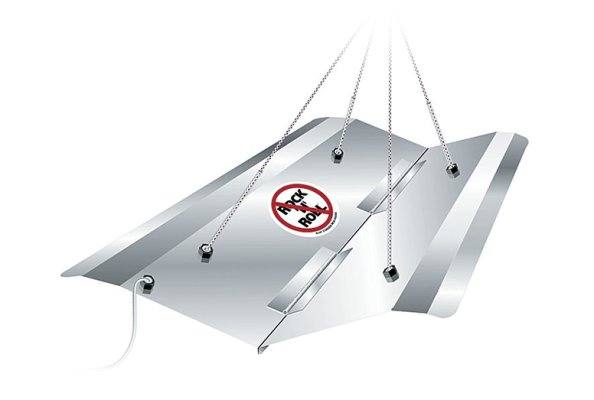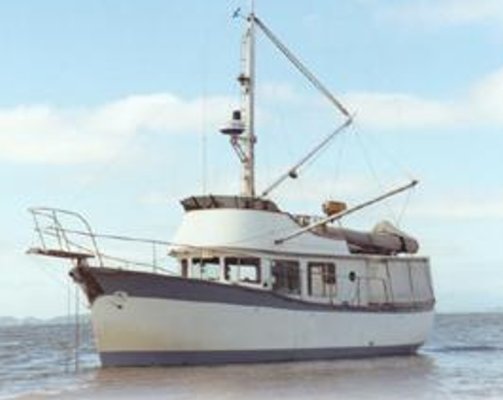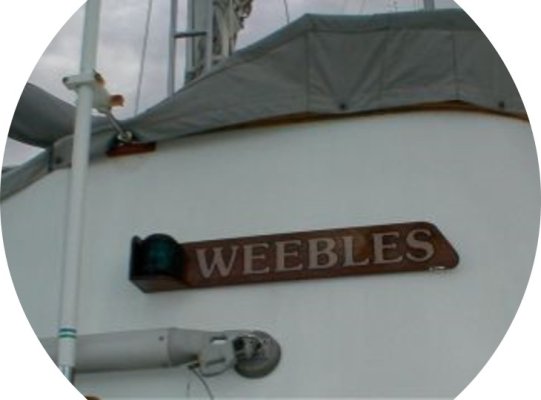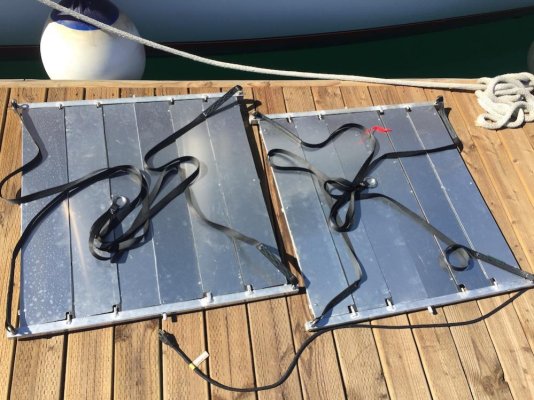mvweebles
Guru
- Joined
- Mar 21, 2019
- Messages
- 7,218
- Location
- United States
- Vessel Name
- Weebles
- Vessel Make
- 1970 Willard 36 Trawler
Looking for ideas for at-anchor flopper stoppers. Goal is something easily deployed and stout to replace my current original equipment setup that is definitely stout but a PITA to deploy. Not looking for a paravane setup, but not looking for a dinky Magna setup either.
Current on my 1970 Willard 36 is a pair of 3" spinnaker poles - must be 12-long each - fixed end is a traditional spinnaker snap into a 2" SS loop on the side of the bonnet. They tuck nicely against the flybridge bonnet when not in use but require quite a bit of rigging at each use. I could go a few years and not need them, but when I need them, seems like I'm in places where open roadstead anchorages are all you get so I use them constantly. On paper, rigging should be a snap. In practice, rigging a fairly heavy pole that is pretty long and hangs well over the side decks is difficult. Greased pig comes to mind.
Best stowage is for poles to lay horizontal along the flybridge bonnet (versus vertical similar to paravanes). What I could use input on is the hinge and support configuration to avoid free-end rigging. Could also use suggestions on better materials, perhaps smaller sized aluminum with more adaptive end fittings.
Any real world examples out there?
Current on my 1970 Willard 36 is a pair of 3" spinnaker poles - must be 12-long each - fixed end is a traditional spinnaker snap into a 2" SS loop on the side of the bonnet. They tuck nicely against the flybridge bonnet when not in use but require quite a bit of rigging at each use. I could go a few years and not need them, but when I need them, seems like I'm in places where open roadstead anchorages are all you get so I use them constantly. On paper, rigging should be a snap. In practice, rigging a fairly heavy pole that is pretty long and hangs well over the side decks is difficult. Greased pig comes to mind.
Best stowage is for poles to lay horizontal along the flybridge bonnet (versus vertical similar to paravanes). What I could use input on is the hinge and support configuration to avoid free-end rigging. Could also use suggestions on better materials, perhaps smaller sized aluminum with more adaptive end fittings.
Any real world examples out there?




